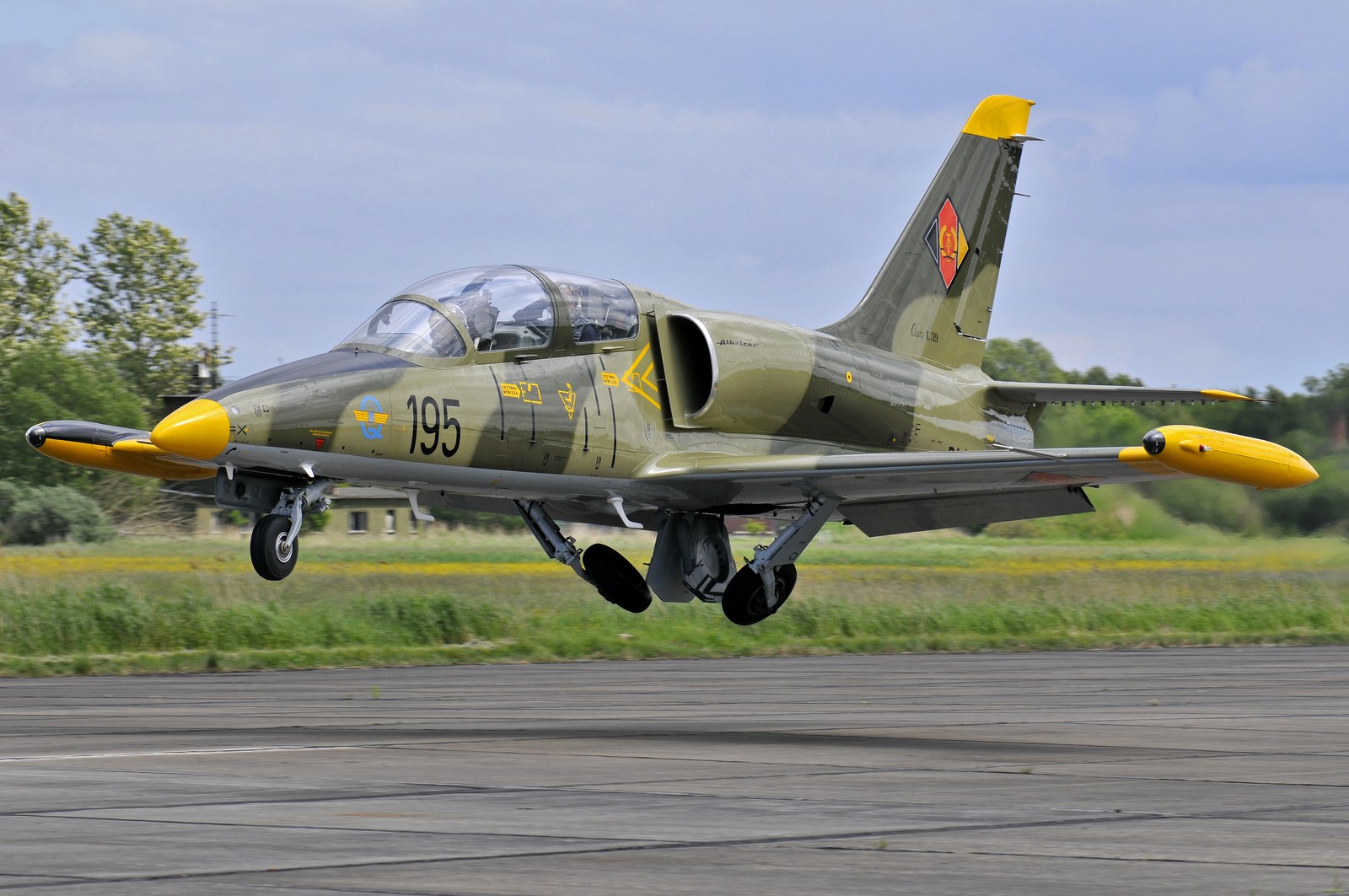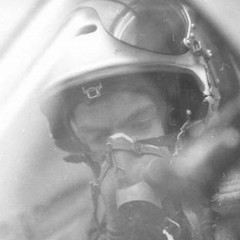-
Posts
290 -
Joined
-
Last visited
Content Type
Profiles
Forums
Events
Posts posted by portman
-
-
Just speculating here, but how do we know which kind of radio was installed in the machine ED based their modelling on? Because some high(ish)-powered transmitters may well use high-voltage AC for their RF output stages instead of just 24V DC, and hence the need for switching on the inverters beforehand. Just speculating though...
You're right. The R-832 radio needs 27V DC and 115V/400Hz AC to work. The start-up checklist I found was for an L-39 of a former series which had the RTL-11 radio installed, which works with 27V DC only. Thanks for the hint.
-
Ich wollte ja gar keine Grundsatzdiskussion anstoßen. Aber ich finde man muss nicht bestehende deutsche Begriffe krampfhaft verenglischen, um sie dann in deutschem Kontext zu nutzen.
Ich bin today ohne breakfast mit dem car zur Arbeit gedrived. sounds nicht gesund for me.
Für mich ist das auch befremdlich. Aber solange es sich um NATO-Streitkräfte handelt - ok. Ich hingegen befasse mich seit Jahrzehnten mit den LSK/LV der NVA und deren sowjetischen Mustern, habe viel Originalmaterial zu den Flugzeugen, Verfahren und Prozeduren. Schon lange vor DCS war für mich der HSI ein künstlicher Horizont, der Trigger ein Kampfknopf, Flaps waren Landeklappen, Comms war der Sprechfunk, und genauso ist es heute auch noch, und mich überkommt das kalte Grauen, wenn in einem Youtube-Tutorial über die MiG-21 von "Master Arm", "Trigger" und "Radar Switch" gesprochen wird. Aber hey, ich muss es mir ja nicht anschauen ;)
-
Everything you listed is related to navigation or has little to no use in DCS. Nice to have but not a neccessity. I'd rather have the visual aspect and sounds finished first (new textures and external model corrections, AB etc.) than the stuff you mentioned.
Fair enough. To me avionics and navigation are top priorities, as in the first place I'd like to fly and not to look at my fancy AB textures.
-
This module is being praised on the DCS website as "designed from the ground up to faithfully recreate and simulate all interior avionics to their fullest extent".
ARC-10: Switch COMP-ANT
Sim: Without a function.
Real life: COMP. lets you hear the morse code of the beacon; ANT shows the direction to the beacon
Radio: Switch RADIO-COMP. is not implemented correctly
Sim: RADIO lets you hear the radio chatter; COMP. lets you hear the morse code of the beacon
Real life: RADIO lets you hear the radio chatter; COMP. shows the direction to the radio beacon
SORC lamp must be pressed several times if multiple warnings are present - not like in RL.
SORC lamp goes out if the reason of the warning is not present anymore - not like in RL.
SAU stabilize mode does not counterbalance assymmetrical loadout, like in RL.
Radar: In the real thing, using the radar jamming filters results in a lock of the radar range to 8-12 km and throttle rotator can be used to adjust the sensivity of the radar antenna, thus changing the appearance of the clutter on the screen. This is not implemented, AFAIK.
RSBN: Manual mode (azimuth, distance switches) is not implemented.
ARK implementation is still completely unrealistic.
This module has been out for 7 years now, still I can't call it a simulation.
-
I'd go for an AN-2 myself.
Yep! :thumbup:
-
OK, now that this has been sorted - when will the ARK get properly implemented, so that virtual pilots can practice an Inner/Outer NDB approach like in RL?
-
What you describe in 100 m AGL sounds like a bird strike. Did you check that "birds" setting in the options menu?
-
Didn't use mods, ran repair on the default Russian cockpit numerous times.
I will try to switch back when I get home from this trip, thank you.
I have the same issue and nothing of the above has fixed it for me :(
-
Die gibt es sehr sehr wohl !!! - und dass in Bereichen wo DCS/ED (zur Zeit) nur auf dem Papier - und in ihrer Absicht was sie zu tun beabsichtigen - hinlangt. Man muss aber bereit sein sich darauf einzulassen (was vorrangig ne Kopfsache ist), und über den eigenen Tellerrand hinaus blicken. Muss bereit sein ausgetretene Pfade der Sim-Gewohnheiten zu verlassen, dann tut sich oft Überraschendes auf. Anstatt aus Frust über die Gegenwart der militärischen Flugsimulation das Hobby hinzuschmeissen, habe ich dadurch neues gefunden und bin begeistert :smartass: :thumbup: .
So wurde DCS als mein vormals Nr. 1 Militär-Flusi, zu meinem "Höchstens mal gelegentlich Simulator", wo ich selbst die Release/Stable Version nur noch bei Laune update. Zusätzlicher (positiver) Nebeneffekt: Kein Frust mehr über DCS und die Politik von ED, weil der DCS in meinem Sim-Alltag nur noch eine Nebenrolle spielt.
Wie abgestumpft ich selbst war habe ich besonders dann begriffen als ich bei Konkurenzprodukten merkte, wie gut Military-Sims eigentlich laufen können, und wie gut AI eigentlich programmiert sein kann - ohne grosse Performanceeinbussen (was für mich als Singleplayer sehr wichtig ist).
Ich warte die ganze Zeit auf eine Auflösung. Kannst, willst oder darfst du (hier) nicht zum Punkt kommen? ;) Oder hab ich gar etwas verpasst, weil hier so viele rumgähnen? ;)
-
-
-
Il-28. Old school attack
 Can’t find a single cockpit photo. Says here the bulge is a mapping radar, wonder how that helps the pilot if there is no display?
Can’t find a single cockpit photo. Says here the bulge is a mapping radar, wonder how that helps the pilot if there is no display?You can see the radar display right on the first photo you attached
 It's the thing that looks like a big binocular you can look into.
It's the thing that looks like a big binocular you can look into. -
Maybe Murey2 is talking about the spin recovery by using the chute to bring the nose down and stop the spinning. Mentioned in the RL manual, paragraph 170.
-
Sorry for rehashing this thread, but it seems to me that the starting procedure is wrongly modelled. In every official document I found (even a real start-up checklist by a former East German pilot) the switches "Inverter 115 V I" and "Inverter 115 V II" should not be operated before the engine is running. The radio is usable only by switching on the "Battery" switch. In DCS I have to operate the Inverter switches to get the radio working (for obtaining the clearance for engine start). Any comments?
-
The shutters in the front are the engine surge shutters and they are controlled hydraulically if I'm not mistaken. You can also control them manually. There's no manual control for the larger shutters (I believe they called it "start shutters" back then) below the cockpit, as they are vacuum-actuated.
The loud metal clunks you can hear are the symptoms of what the manual describes as "powerplant surge".
The engine nozzle switch lets you close the engine nozzle manually in case there's a failure of the nozzle automatic control system. It has nothing to do with the nosecone control or powerplant surge.
-
Habe als 7-jähriger auf dem guten alten 386er angefangen. Die ersten Flug"simulationen" waren Blue Max: Aces of the Great War, sowie LHX Attack Chopper. Als Teen gings weiter mit F-22 ADF, F/A-18 Korea und Eurofighter Typhoon. Nebenbei viele Flugzeugmodelle gebaut. Dann gab's eine über zehnjährige Pause, in der andere Dinge viel wichtiger waren. Und dann hab ich 2012 zufällig ARMA gespielt und fand mich im Cockpit irgendeines VTOL-Flugzeuges wieder. Seitdem war ich wieder angefixt, Lock-On FC2 geholt.... dann FC3.... dann DCS.
Edit: Bin Mitte 30.
-
Was the release date chosen deliberately? :)
-
-
The Monsun was developed in Poland for those versions of the MiG-21 equipped with only two pylons. The MiG-21bis (4 pylons) can only use the APU-60-2 for the R-60 missile.
-
You have to use the PTT button on the throttle for this, or at least the key shortcut for pressing the PTT button.
-
We need to fix our current shit out before we daydream about future!
+1000
-
Sehe ich auch so, da englisch in der Luftfahrt nun mal die Verkehrssprache ist. Ich kenne zu den ganzen englischen Begriffen teilweiße gar nicht die deutschen bezeichnungen. Da wir hier aber im deutschen sub-Forum sind, sollten der Form halber zumindest einige deutsche Füllwörter enthalten sein. ;)
Okay, vielleicht sollte ich das nächte Mal noch "Ironie aus" dazuschreiben... Ich habe nichts gegen luftfahrtspezifische, englische Fachbegriffe, aber Wörter wie Radbremsen, Schubumkehr oder Landegewicht sollte man eigentlich kennen... Wenn einem das zu uncool ist, könnte man wenigstens "landing weight" korrekt schreiben.
-
Ist bei vielen Fliegern so. Beim Powerbacking sollten dann die Wheelbrakes wie rohe Eier behandelt werden.
Die meisten Flugzeuge, die über einen Reverser verfügen können das ja, aber man hört immer wieder, dass es bei den meisten. oder zumindest bei vielen, nicht erlaubt ist. Mich würde aber mal interessieren, wie hoch die Wirkung der Clam Shells im Bereich des Max. Landingweight ist.
Schreib doch gleich alles auf Englisch, ist einfacher :thumbup:
-
Das ist wie beim Autofahren. Am Anfang weiß man nicht, was man zuerst bedienen soll, Lenkrad, Gas, Bremse, Kupplung, Schalthebel, Blinker... und dann alles auf einmal? :) Die gute Nachricht ist: Irgendwann klappts von ganz alleine. Mein Senf dazu:
Sich erstmal auf ein Flugzeug konzentrieren; Schritt für Schritt, System für System lernen: Starten, Landen, Navigieren, BFM, Waffen. Kann man das eine, ist das nächste dran. Echte Piloten lernen's auch nicht anders. Ich für meinen Teil studiere bei neuen Fliegern erstmal das Handbuch und schreibe mir alles wichtige aufs Kniebrett (v.a. Checklisten, Betriebsgrenzen usw.). Alleine durch dieses Schreiben merkt man sich schon vieles, und man kann später während des Fluges schnell darauf zugreifen. Ansonsten hilft Geduld und Interesse. Wenn du die Grundlagen in einem (etwas komplexeren) Flugzeug einmal beherrschst, lässt sich vieles schnell auf andere Muster übertragen.



 Can’t find a single cockpit photo. Says here the bulge is a mapping radar, wonder how that helps the pilot if there is no display?
Can’t find a single cockpit photo. Says here the bulge is a mapping radar, wonder how that helps the pilot if there is no display?
MiG-23MLA external model WIP
in RAZBAM
Posted · Edited by portman
-